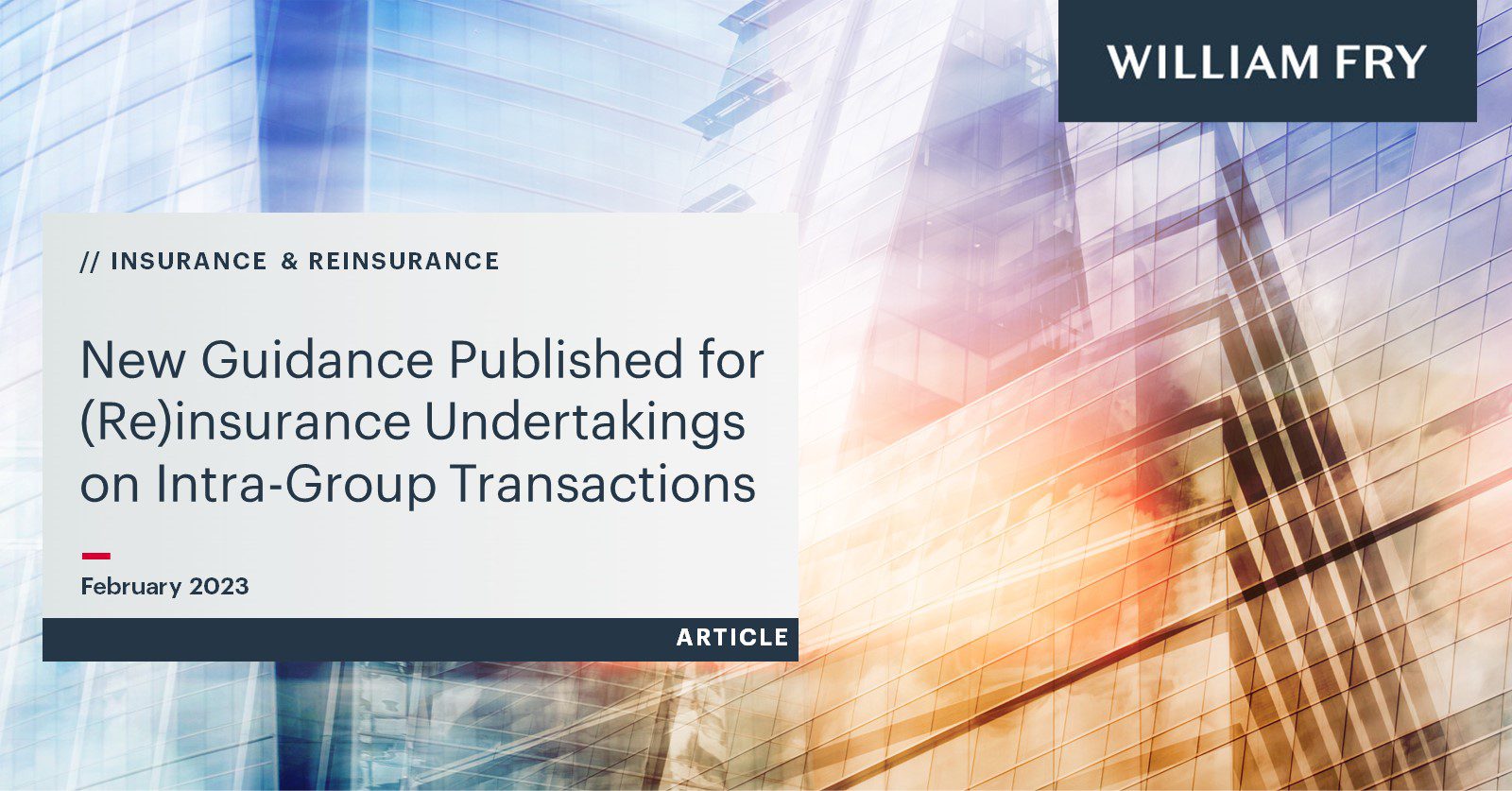On 30 January 2023, the Central Bank of Ireland (Central Bank) published its “Guidance for (Re)Insurance Undertakings on Intragroup Transactions & Exposures” (Guidance).
The Central Bank’s stated aim in publishing this guidance is to be “more transparent about its expectations with regard to IGTs of (re)insurance undertakings supervised by the Central Bank and in doing so, to promote a level playing field” (IGTs are defined in the Guidance as “intragroup financial transactions and exposures”). The Central Bank also states: “The Guidance does not introduce any new requirements on (re)insurers in relation to IGTs. Rather, the Central Bank wishes to clarify its expectations on what compliance with the existing Solvency II requirements might look like for (re)insurers.”
The publication of the Guidance follows the issuance of a consultation paper on the same topic in July 2022, designated CP150 by the Central Bank. A feedback statement was also published containing the Central Bank’s responses to points raised in the five submissions received under the consultation process.
Structure of the Guidance
The Guidance is broadly split into four sections, the first setting out the expectations of the Central Bank on governance and risk management of IGTs in general. The remaining sections address the most significant intragroup exposures observed by the Central Bank:
- intragroup assets (notably loans from Irish-authorised (re)insurers to other companies within the same group);
- intragroup reinsurance; and
- cash pooling/treasury function arrangements.
Key Contents
The Central Bank expectations are set out in the first section as follows:
- The Central Bank expects (re)insurers to extend the same level of oversight to an intragroup counterparty exposure as they would to an external counterparty.
- Where (re)insurers enter IGTs, the ensuing risks are appropriately detailed in their risk register, and the risk appetite statement includes detailed metrics.
- (Re)insurers can evidence that the board has appropriately considered its ongoing compliance with the pre-defined appetite for IGTs and that any KRIs set out in its risk appetite statement have been appropriately embedded in the (re)insurer’s risk management framework generally.
- All deliberations by the board are fully documented, with the minutes of meetings providing sufficient detail evidencing appropriate board attention, the substance of discussions and their outcome. Material IGTs should be regularly reviewed for their on-going appropriateness in respect of the (re)insurer and their ongoing compliance with the pre-defined appetite for these arrangements.
- Risk management policies include definitions of and limits on intragroup arrangements and outline the frequency with which material IGTs are reviewed and approved by the board.
- Where (re)insurers implement group policies and procedures, they are in a position to demonstrate how these group policies and procedures appropriately reflect the (re)insurer’s risk exposures, tolerances and requirements.
- The (re)insurer’s internal audit function considers regular audits of material IGT risk management in its overall audit planning.
Comparison to the Consultation
The structure and content of the Guidance are largely unchanged from the original CP150. The most significant (and welcome) change is the clear recognition that most of the expectations set out in the Guidance are subject to a materiality threshold. This is a welcome response reflecting a point made in all submissions to the consultation that CP150 as written, while acknowledging proportionality, implied that all intra-group reinsurance arrangements should be subject to the same level of scrutiny and board approval (both at outset and on an ongoing basis). The Guidance does not explicitly address how materiality is to be established, so it is up to boards of undertakings to decide what their definition of materiality will be in this context.
CP150 also envisaged a “comply or explain” approach to the proposed Guidance, and that has been retained verbatim in the published Guidance. Unfortunately, the Central Bank has not responded to a point raised in a submission to the consultation requesting that the final Guidance should specify the process that might be followed if an undertaking decided not to comply with the Guidance. This omission arguably makes it less likely for boards to opt for the “explain” approach in practice.
Conclusions
(Re)insurance undertakings will welcome the clarity that the Guidance brings to the Central Bank’s expectations around the governance and risk management of IGTs. However, they should note that the Guidance takes immediate effect from the publication date of 30 January 2023. This will require them to act rapidly to ensure that they are in compliance with the Guidance and in particular, to bring to the attention of their boards matters upon which they will need to decide, not least the definition of materiality in relation to IGTs.
One further matter remains to be considered, even by (re)insurance undertakings that do not have significant exposures to IGTs. In its Feedback Statement, the Central Bank states:
” The Central Bank’s main concern in preparing the Guidance is to ensure that IGTs are not subject to a lower standard of risk management and oversight than equivalent arrangements with non-group third parties …. We have the same expectations in relation to transactions with external counterparts.”
With this in mind, all (re)insurance undertakings should review the Guidance to satisfy themselves that they meet the expectations of the Central Bank regarding their exposures to third parties, just as much as any intra-group exposures.
For further information, please contact Eoin Caulfield, Ian Murray, John Larkin, or your usual William Fry contact.
Contributed by Mike Frazer




